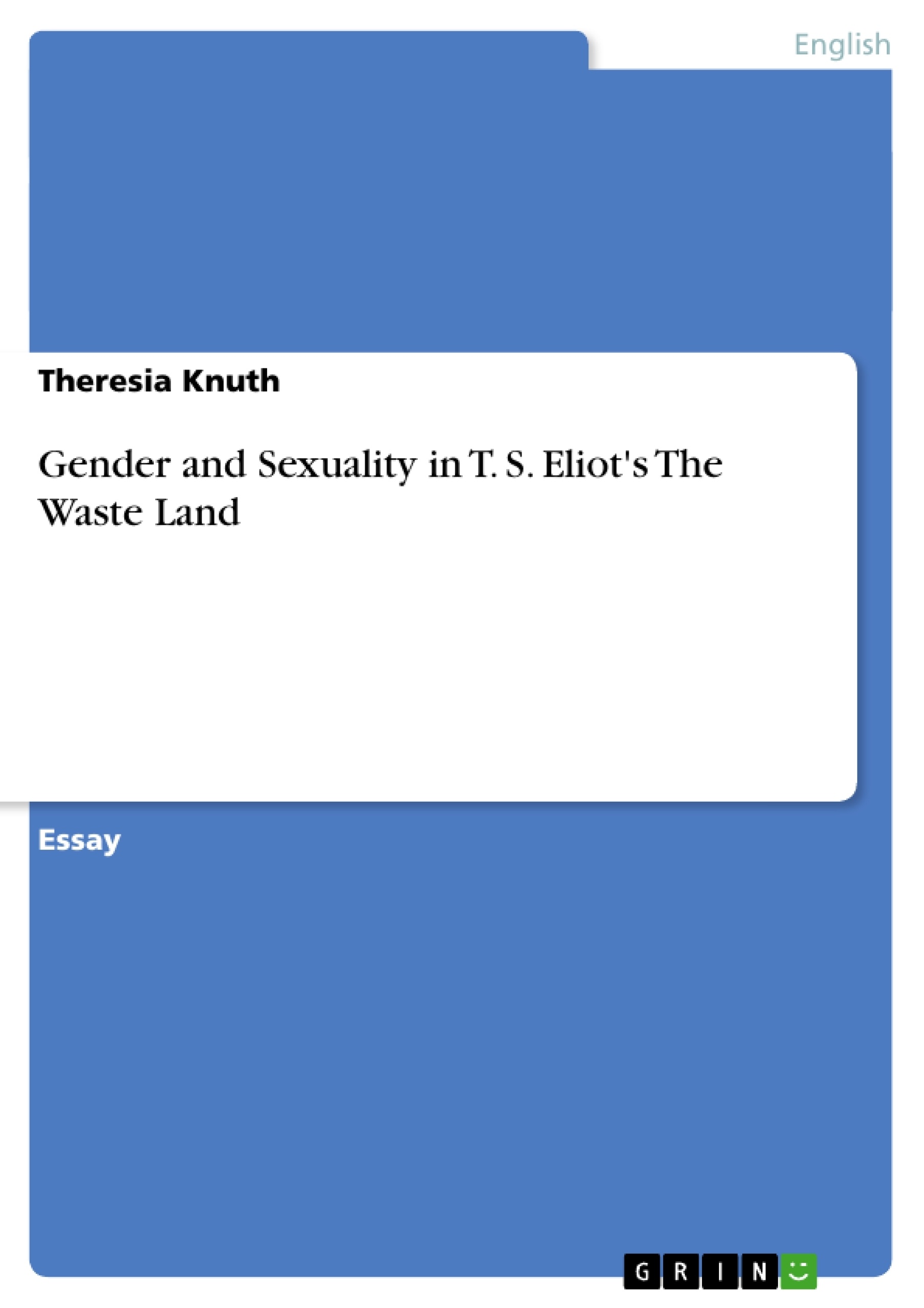The rise of feminist theory during the last decades provoked a reconsideration of the general focus of interpreting literary texts, and literary criticism has been largely engaged in a rereading of canonical author’s works in terms of gender and sexuality while many definitions underwent a necessary revision. Modernist works, especially poetry, are a rewarding source for an interpretation in these terms since due to their fragmentary, ambivalent nature and lack of thematic clarity they offer much room for different interpretations. With its predominating sexuality, Freudian psychoanalysis and questions of sex and gender sneaked into the modernist world. In this essay I will attempt a reading of T. S. Eliot’s The Waste Land in order to see in how far such issues are implied. 1 My understanding of ‘gender’ follows that of Judith Butler, who pointed out that gender is not only socially constructed in discourse rather than biologically predetermined, but also performative. 2 This is quite evident in Eliot’s poem. Moreover, in modernist texts sexuality seems to lose romance and meaning. In Eliot’s case such a loss seems connected with personal experience. His marriage with Vivien Haigh-Wood was problematic from the beginning on and worsened increasingly, and while working on The Waste Land he had a nervous breakdown. The poem is divided into five parts and features various narrative voices which cannot always be identified unmistakably, especially in terms of the speaker’s gender. In order to examine the depiction of gender and sexuality in the poem, I will proceed mostly chronologically and focus on the depiction of the love relationships. Due to the limited scope of this paper I cannot, by far, include all relevant themes, let alone the numerous other related fragments and themes. The focus is therefore on the hyacinth girl, the Fisher King and Phlebas / Eugenides, the couple and Lil and Philomel, as well as Tiresias and the typist. Images of fertility and homoerotic desire will be considered alongside the character depictions. [...]
Inhaltsverzeichnis (Table of Contents)
- INTRODUCTION
- GENDER AND SEXUALITY IN THE WASTE LAND.
- CONCLUSION
Zielsetzung und Themenschwerpunkte (Objectives and Key Themes)
This essay aims to analyze T.S. Eliot's "The Waste Land" through the lens of gender and sexuality, drawing upon feminist theory and Judith Butler's concept of performativity. The analysis focuses on how the poem's fragmented structure and ambiguous voices create space for multiple interpretations, particularly regarding the portrayal of love relationships and sexual dynamics.
- The performativity of gender in the poem's ambiguous voices
- The depiction of love relationships and sexual encounters
- The role of fertility symbolism and the connection to the wasteland imagery
- The exploration of homoerotic desire and its connection to themes of loss and mourning
- The interplay between traditional gender roles and their subversion in the poem
Zusammenfassung der Kapitel (Chapter Summaries)
- INTRODUCTION: This section introduces the context for analyzing "The Waste Land" in terms of gender and sexuality, highlighting the influence of feminist theory and the poem's ambiguous nature. It also explains the approach taken in the essay and mentions specific characters and themes that will be explored.
- GENDER AND SEXUALITY IN THE WASTE LAND: This section focuses on the depiction of gender and sexuality in the first part of the poem, "The Burial of the Dead." It examines the characters of Marie, the hyacinth girl, and the Fisher King, exploring their roles in relation to themes of fertility, impotence, and the wasteland imagery. It also touches upon the ambiguity of the speaker's gender and the potential for homoerotic readings.
Schlüsselwörter (Keywords)
This analysis of "The Waste Land" focuses on key themes related to gender, sexuality, and the depiction of a fragmented and desolate modern society. The essay examines concepts such as performativity, fertility, impotence, homoerotic desire, and the intersection of traditional gender roles with their subversion. It also draws upon the works of Judith Butler, Richard Wagner, and other relevant critics and scholars.
- Quote paper
- Theresia Knuth (Author), 2007, Gender and Sexuality in T. S. Eliot's The Waste Land, Munich, GRIN Verlag, https://www.grin.com/document/70041



